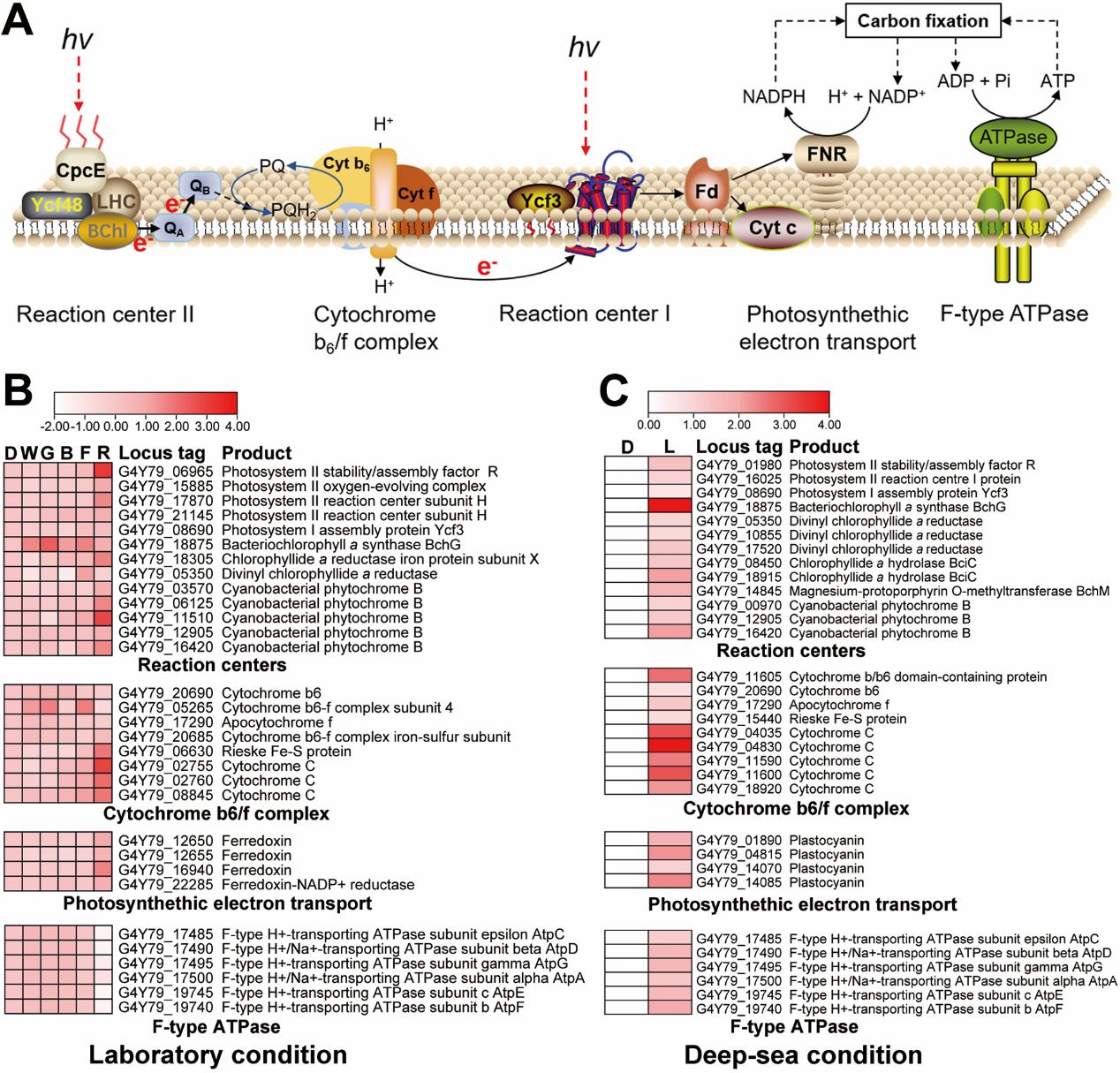Chloroflexi, formerly called "green non-sulfur bacteria", is a kind of filamentous bacteria possessing a high abundance in various environments. However, there are only a few groups cultured in deep-sea environments, which are typical difficult-to-cultivate microorganisms, and their biological characteristics are basically blank at home and abroad.
Recently, the research team led by Prof. SUN Chaomin from the Institute of Oceanology of the Chinese Academy of Sciences (IOCAS) investigated the pure culture of deep-sea difficult-to-cultivate Chloroflexi bacteria and their special energy metabolism mode of obtaining light energy through photosynthesis.
The study was published in mBio on Mar. 1.
Researchers isolated a deep-sea Chloroflexi bacterium (named Phototrophicus methaneseepsis ZRK33) by using a basal medium constantly supplemented with 50 μg/mL rifampicin, which belongs to Candidatus Thermofonsia clade 2 that speculated to be a new class of photosynthetic bacteria, but it has not been confirmed due to the lack of pure culture strains.
After obtaining the pure culture strain, researchers confirmed that strain ZRK33 was the first cultured representative of Candidatus Thermofonsia clade 2 by 16S rRNA gene and genome phylogenetic analyses.
Genome sequencing revealed that strain ZRK33 had a complete photosynthetic pathway, suggesting that it might have the potential to utilize light energy. And they found that different wavelengths of light illumination, especially red light, could promote the growth of strain ZRK33, which confirmed its characteristics of using light energy.
Transcriptomics results revealed that the expression of a series of key genes related to photosynthesis in the genome of strain ZRK33 was significantly up-regulated under red light, confirming that strain ZRK33 could utilize light energy through photosynthesis.
Researchers used the advanced equipment to in situ culture strain ZRK33 in the deep sea for 10 days, and combined transcriptomics to confirm that strain ZRK33 could also carry out photosynthesis in deep sea environments. Furthermore, metagenomic results showed that Chloroflexi bacteria with photosynthetic pathway were widely distributed in deep-sea cold seep and hydrothermal vent environments, indicating that deep-sea Chloroflexi bacteria were an important light-using group.
"There is increasing evidence of different forms of geoluminescence or bioluminescence (nearly 80% of deep-sea animals emit light) not only in hydrothermal vent environment but also in other deep-sea habitats such as cold seeps. Therefore, more deep-sea microorganisms that can utilize light energy should be cultivated and then analyze their mechanisms of light energy utilization in future research," said Dr. ZHENG Rikuan, first author of the study.
"This study provides an effective means to break through the culture bottleneck of deep-sea microorganisms, and provides research materials for understanding the special life processes of important deep-sea microbial communities," said Prof. SUN.
This work was funded by the Strategic Priority Research Program of the Chinese Academy of Sciences, China Ocean Mineral Resources R&D Association Grant, Key Deployment Projects of Center of Ocean Mega-Science of the Chinese Academy of Sciences etc.

The novel Chloroflexi bacterium ZRK33 showed typical photosynthetic microbial characteristics in laboratory and deep sea conditions
Rikuan Zheng, Ruining Cai, Chong Wang, Rui Liu, Chaomin Sun*. Characterization of the first cultured representative of Candidatus Thermofonsia Clade 2 within Chloroflexi reveals its phototrophic lifestyle. mBio, 2022, 13(2): e00287-22.
SUN Chaomin
Institute of Oceanology
E-mail: sunchaomin@qdio.ac.cn
(Editor: ZHANG Yiyi)
|
|

Address: 7 Nanhai Road, Qingdao, Shandong 266071, China
Tel: 86-532-82898902 Fax: 86-532-82898612 E-mail: iocas@qdio.ac.cn


